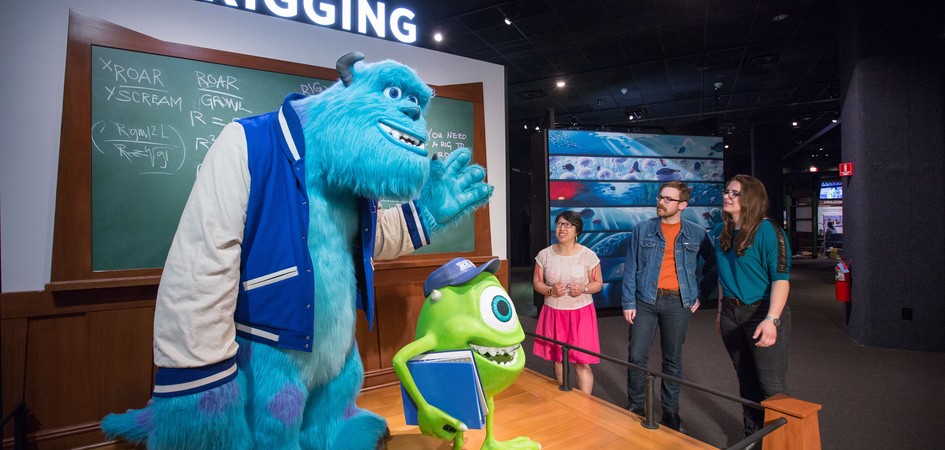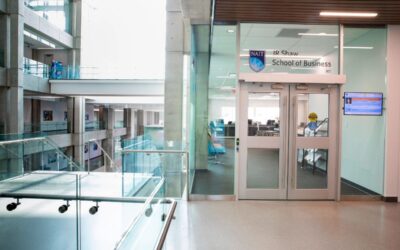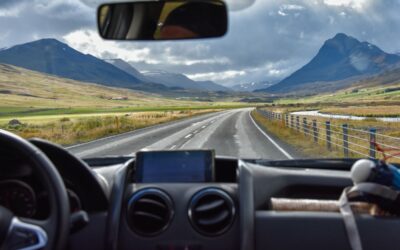Explore the science behind the Pixar magic at the Telus World of Science. The
exhibit takes you behind the scenes to learn about all the work and creativity that goes into making Pixar’s films.
The magic begins as you enter a room filled with your favourite Pixar characters like Buzz, Sully and Dory! You are walked through the nine steps of creating an animated film – story and art, modelling, rigging, surface, sets and cameras, animation, simulation, lighting and rendering.
They start with story and art. This is where the basics for the story are created, and basic camera angles are set. At this time, storyboards are created using art that is drawn. Artists imagine how these stories will look, and eventually create 3D sculptures so that they can better envision the characters. While this is going on, writers create storyboards to start outlining the film.
Modelling is where they take the 3D art and turn it into a virtual model. They create a wire mesh around the model to help show some of the characters’ features. It is denser around features like the nose or mouth.
Rigging is the process where they create movement in the character. They are
basically giving the character a skeleton. They create virtual muscles and joints that allow the characters to move.
Surface is where surfacing artists build the characters’ appearance using computer programs. They start by making a black and white outline of the character, then shaders fill in things like clothes, hair and skin with
colour and texture.
During sets and cameras, set designers build a virtual environment and camera
artists come in to get camera angles, basic movements and then character motions are finalized. They model just enough of the sets so they can move virtual cameras around. As a radio and TV student learning about camera movements, this section was my personal favourite!
The big step is animation. Animators bring the story to life by moving the characters to act out every scene. You see 24 frames every second, and one frame alone can take over 24 hours to film, if they don’t run into any problems.
Simulation is used to add detail. They add movement to things like hair and clothes and special effects to other portions of the film.
Lighting is a very basic step but it is one of the most important. It’s where
lighting designers add light to each scene. It highlights portions of the story and injects emotion into it. Lighting can change the atmosphere in the whole scene.
Last is rendering. This where everything comes together. The animators turn the 3D image into the final 2D scene. They also decide the colour of each pixel here. This process can take 33 hours for each scene.
The exhibit isn’t just information. There are tons of interactive portions to keep you entertained. You can try things like simulating crowds of fish from Finding Nemo, lighting the house from UP, rigging Elasta-Girls arms and even build your own character model.
I would highly recommend this exhibit to anyone with an interest in film or who loves Pixar! For more information on the exhibit and hours of operation, head to telusworldofscience.ca. Hurry down and check it out!
– Sarah Fox
Photo © Michael Malyszko & © Nicolaus Czarnecki via Edmonton Tourism





